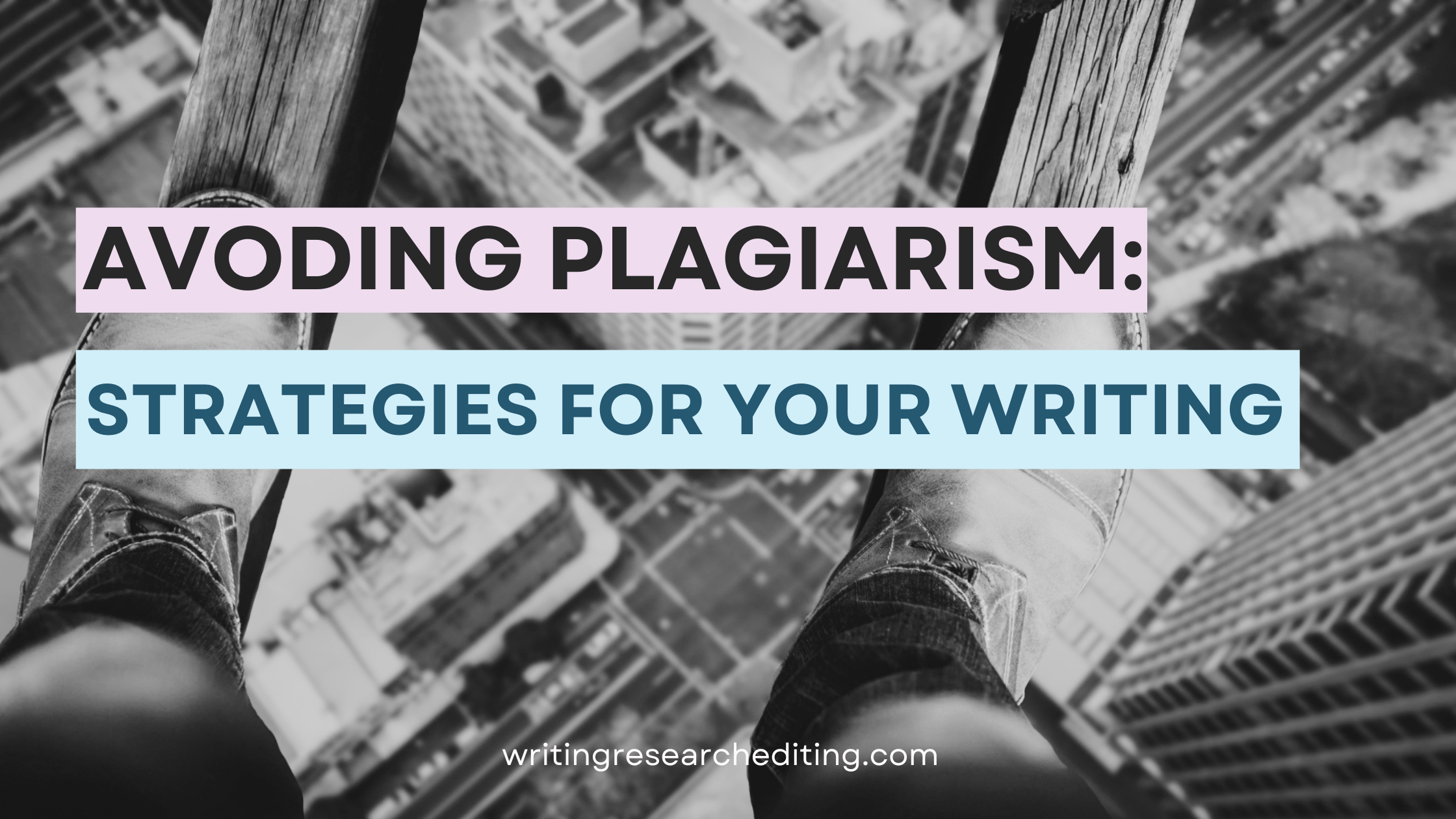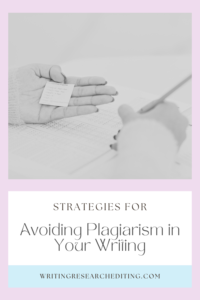Whether working on a research project, creating a new blog post, or writing a white paper, avoiding plagiarism is crucial to your success. Plagiarism is using someone else’s ideas or work without proper attribution or permission.
It can take many forms – from the most obvious, where one has copied and pasted text or used someone else’s images and data without attribution, to the sneakier paraphrasing without citation.
Plagiarism is a severe violation of both academic and professional ethics. It can have serious consequences, including failing a class or losing a job. Even if one doesn’t damage one’s career directly by plagiarizing the work of another, it damages one’s credibility and reputation.
When you avoid plagiarism, not only does it promote the development of your original ideas, but it also shows that you respect the work of others.
First, I’ll explain plagiarism and provide examples of the different types. Then, I’ll share four strategies to avoid plagiarism: conducting thorough research and note-taking, using proper citations and quotes, utilizing plagiarism checkers, and developing your writing style and good writing habits.
This post contains affiliate links. Should you click on one and take action, I may receive compensation for that action. I only recommend products and tools that I use and get value out of.
Avoiding Plagiarism Means Understanding What Plagiarism Is
Avoiding plagiarism in writing starts with understanding what plagiarism is. Plagiarism happens whenever you use someone else’s ideas or work and try to pass it off as your own. A common way plagiarism happens unintentionally is when someone paraphrases ideas from another’s work without citing that work.
Grammarly lists seven common types of plagiarism: Complete, direct, paraphrasing, self-plagiarism, patchwork or mosaic plagiarism, source-based plagiarism, and accidental plagiarism. Most of these are self-explanatory.
Mosaic plagiarism is when a writer uses bits of information from different sources without citing them appropriately. Not only is this ethically wrong, but also it can create a confusing patchwork of information that is difficult to follow and does not accurately represent the writer’s thoughts and ideas.
Source-based plagiarism occurs when a writer uses an entire source as their own without proper attribution. While with complete plagiarism, a writer may take a whole document and pass it off with no changes, with source-based plagiarism, a writer takes the ideas from a work and passes them off as their own.
Accidental plagiarism happens when a writer unknowingly plagiarizes someone else’s work. This often occurs when a writer has been sloppy in making notes on their research. This happens when a writer fails to cite a source accidentally or adequately paraphrases too closely to the original text. By understanding these types of plagiarism, writers can be more vigilant in avoiding plagiarism.
1. Avoid Plagiarism with Meticulous Research and Note-taking
I stress the importance of note-taking and using an annotated bibliography because it can help you avoid plagiarism in your writing. Keep notes from each source on separate notecards, sheets of paper, or computer documents.
Differentiate between direct quotes, paraphrases, and your thoughts to avoid confusion later. Additionally, it’s essential to record all the necessary information about your source material, including the work’s title, author, publication date, and publisher.
For journals, magazines, and newspapers, you’ll also need to include the volume number, title of the publication, and the URL you accessed it through.
Lastly, when taking down quotes or paraphrasing information, always write down the page number from which the information was taken to ensure that proper citation is given.
By following these note-taking strategies, you can organize your sources effectively and create accurate citations, ultimately helping you avoid plagiarism in your writing.
2. Use Proper Citation Styles When Writing
Using proper citation styles is essential to avoiding plagiarism in your writing. A citation gives credit to the source of your information. MLA, APA, and Chicago are the three most popular citation styles, and each has its own set of rules and requirements. Ensure you understand and use the correct style required by the assignment or publication.
Be sparing when using direct quotes. They should be used to add credibility to your argument or to emphasize a point – but only if it cannot be effectively paraphrased. When using a direct quote, use quotation marks and follow your citation style guide’s rules for crediting the author.
Finally, include a reference list or bibliography at the end of your document to provide a complete list of all sources you used when researching. Each citation in the reference list should include the author’s name, title of the work, and publication information.
Correctly citing your sources both in-text and in the reference list helps you to avoid plagiarism and give proper credit to the original authors of your sources.
3. Plagiarism Checkers Can Help Catch Accidental Plagiarism
Plagiarism checkers are software programs that scan your document and compare it to a database of existing publications and records to identify any potential instances of plagiarism. Different types of plagiarism checkers are available, including online tools like Grammarly (affiliate link) and TurnItIn.
Some plagiarism checkers may flag potential plagiarism instances as common phrases or words. Review each flagged section carefully to determine whether it requires a citation. Using more than one plagiarism checker may be beneficial to ensure your work is free from plagiarized passages.
4. Avoid Plagiarism by Practicing Good Writing Habits
First and foremost, do not wait until two hours before that big paper for your class is due to start. Nothing creates the temptation to plagiarize, like waiting until the last minute to begin researching and writing your paper. Instead, develop an idea quickly and form your research questions early.
Keep research and writing activities separate. When you try to research and write simultaneously, you’re more susceptible to committing accidental plagiarism than if you focused first on researching, taking proper notes, and then synthesizing your notes into your project.
When writing, take lots of breaks and give yourself plenty of time. That will help keep you fresh, so you don’t start making mistakes when working from your notes.
Finally, getting feedback from peer editing or an editor is good if you have time and resources. A second set of eyes can catch things you – and the plagiarism checker – may not otherwise see.
Don’t Let Plagiarism Be the Reason You Don’t Achieve Your Goals
Plagiarism can be career-breaking. It’s vital to avoid it at all costs. Even accidental plagiarism can damage your reputation. You can reduce the chances of making such a significant error by taking meticulous notes, citing sources properly, running things through a plagiarism checker, and practicing good writing and time management habits.
Contact me if you need a second set of eyes or help setting up your research system. I’d be happy to help you create a system that allows you to avoid plagiarism.




